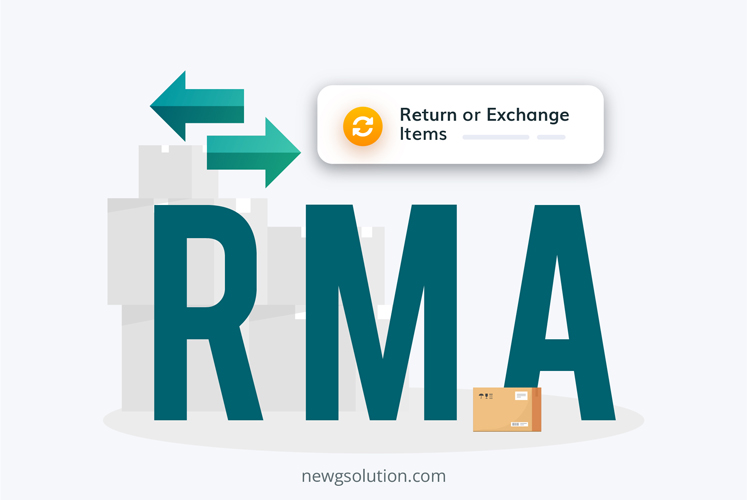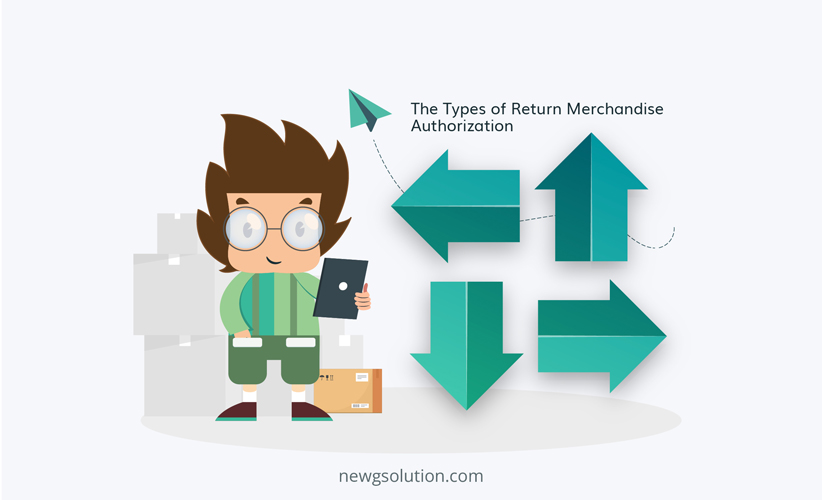Understanding RMA Meaning and Its Effects on Your Business
eCommerce
LAST UPDATE: APR 28, 2023
7 minutes reading
Returns are a hassle for everyone involved due to the time and money they take up. However, in order to maintain a competitive edge and maintain high standards of order management, stores must allow customers to return or exchange items. With Return Merchandise Authorization “RMA”, online retailers may facilitate easier returns for their customers. What exactly does RMA mean?
If you’re curious about Return Merchandise Authorization but don’t know where to begin your research, this blog is for you. Find out what it is, why you need one, and how to use it in your retail business with our help.
What is Return Merchandise Authorization (RMA)?
Getting an RMA, or Return Merchandise Authorization, allows you to send back a product for a refund. Return processing refers to the steps used to return an item for a refund, replacement, or repair.
Using a return merchandise authorization (RMA form), both the customer and the business may keep track of the return’s progress. Although the specifics of obtaining an RMA number may differ by business, in most cases the customer is the one who initiates contact.
How Does Return Merchandise Authorization (RMA) Work?
When a return is to be initiated, the RMA number is given to the customer care team or customer service representative. The return permission form summarizes the key aspects of the company’s return policy. In addition, it includes all necessary instructions for returning the merchandise to the store.
Customers are typically asked for their thoughts and comments on the RMA form. Without a Return Merchandise Authorization “RMA”, the shop may refuse to accept the returned item. It’s for this reason that getting an RMA is so crucial.
The Significance of a Return Authorization Number
RMA is required because it is a crucial step in the reverse logistics process between sellers and buyers.
If a customer is dissatisfied with a delivered product, he or she may request a refund or exchange.
Sellers have the opportunity to fix any errors.
So, what is retail RMA? Here are some reasons why a retail RMA request is necessary.
1. Better Return Management
There are businesses that accept product returns under any circumstance. However, most businesses dislike these types of returns because they need to know the exact condition of the product in order to avoid falling victim to fraudulent customers.
Consequently, RMA process can aid in:
- Provide a portal where you can request clear images of the product from the customer in order to determine whether the product is in acceptable condition for resale.
- Claim compensation from the shipping partner if the product arrives damaged.
2. Rapid Return Handling
Once you have accepted a return or received the returned item, you are required to issue a refund within the specified timeframe.
An efficient system for return management authorization will:
- Track every returned item
- Notify you of pending refunds so that the refund issue can be resolved.
Numerous return management systems with RMA processes enable merchants to credit the customer’s account immediately upon approval of the return, thereby shortening the process.
3. Easy Return Status Tracking
Customers wish to monitor the RMA process when returning merchandise. Therefore, they will likely call or email you to inquire about your progress.
The RMA links the return to the original transaction in order to quickly and precisely answer any question. The RMA process flow when a customer requests a refund or exchange is as follows:
- Connect the return to the customer’s original order information.
- Centralize all of the information in your system (ERP or CRM)
Thus, RMA enables you and your customers to track and monitor the status of returns in real time, including:
- Location (shipping or arrived at your warehouse)
- Transport method
- Time required to process refunds or exchanges
4. In-Depth Analysis to Determine Why Customers Reorder
The RMA system allows customers to select a return reason from a list.
- The list might include all agreed-upon reasons for consumers to return products
- You will be aware of the precise reason for following up with consumers, and customers will have the option to voice their discontent.
The Types of Return Merchandise Authorization
The available RMA types are as follows:
- Credit only – only issue a refund, without returning the merchandise.
- Mend – mend the products.
- Repair and billing entail – repairing the product and billing the client for the repair.
- Replace – send the consumer replacement merchandise. It is possible to return products.
- Receipt and credit – accept returned items and issue a reimbursement.
- Receipt and no credit – receive returned items without credit.
- Reject and ship back – based on the inspection of the returned products, reject the return and ship the products back to the customer.
What is a Return Merchandise Authorization (RMA) Number?
You issue an RMA number to a specific order to permit the return of a product to:
- Track the kind, name, and number of returned items so that nothing is misplaced and the products are not shipped with new items.
- Scan the number upon arrival to automatically update the inventory management software with the new quantity.
- Verify the return status Include the RMA number on your website so that customers and you can both verify the status.
What is a Return Merchandise Authorization (RMA Form)?
RMA forms are used by customers to return merchandise. This form stipulates:
- Customer data: Name, telephone number, and address are examples. You can use this information to locate the customer’s original order or to send a replacement.
- Product information: product name and return quantity
- Reason for return: Specify the reason a product is being returned. It may be a space for a written explanation or a sequence of checkboxes for more frequent difficulties.
- Return or refund: Customers can request either choice. Customers are able to request either a return or a refund.
Retailers may include RMA forms with the product, include them in the eCommerce package, or mail them to customers upon request.
The Phases of the Return Process
There are 9 significant steps in the RMA process. They are listed below:
- The RMA is requested by the client; this is the first and most crucial step in the procedure. If a customer doesn’t request an RMA, their return cannot be processed.
- Automatic or human approval of the RMA request and assignment of an RMA number by the business. If the request is approved, you must additionally assign an RMA number.
- The consumer receives the RMA number, which will be referenced in any further interactions between the client and the business.
- The business receives the items stated on the RMA. The customer will return the items to you, and you will need to verify that everything they’re returning is listed on the RMA.
- The company examines the received objects and documents its results. You must examine the things and create a record of their condition. This is essential for both quality monitoring and calculating any restocking fees.
- Invoking additional vendor-specific procedural processes for the RMA – There may be numerous stages in the life cycle of an RMA case, and you must take the necessary action at each.
- Case is closed and case resolution is assigned – After the RMA request has been processed, you must close the case and assign a resolution.
- The company notifies the customer of the findings and resolution – The customer must be informed of the status of their RMA case and the resolution.
- The customer receives a refund, a replacement, or a product that has been repaired.
What information is needed for an RMA?
At a minimum, the RMA form has to have four pieces of information. Details about the item being returned (such as its stock keeping unit (SKU) or inventory number), the customer’s contact information, the reason for the return, and the amount to be refunded.
Return Merchandise Authorization (RMA) Best Practices
More nuanced decision-making is required to make the most of RMAs than just accepting or rejecting individual returns. It has been estimated that automating RMAs can help you recover as much as 35% of lost income by fostering product exchanges rather than returns.
- You can start the return process online.
- Streamline the process of resolving internet price discrepancies
- Let clients choose replacement products
- Let Customers Print Their Own Labels
- Make sure the return is a natural extension of the original sale.
- Help Make Deals Simpler
Conclusion
Like traditional stores, online retailers must handle customer requests for refunds and returns. However, things get more complicated when customers aren’t present.
Refunds and merchandise authorizations should be easily processed in a well-organized online business (RMAs). With this in place, any issues that may arise with an order can be dealt with speedily and effectively.
To see how New G Solution makes RMA processing seamless for your company and its customers, request your free 14-day trial today. Contact us !




Recent Comments